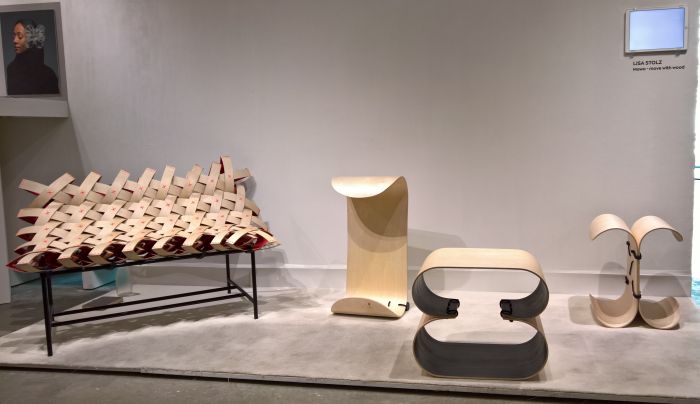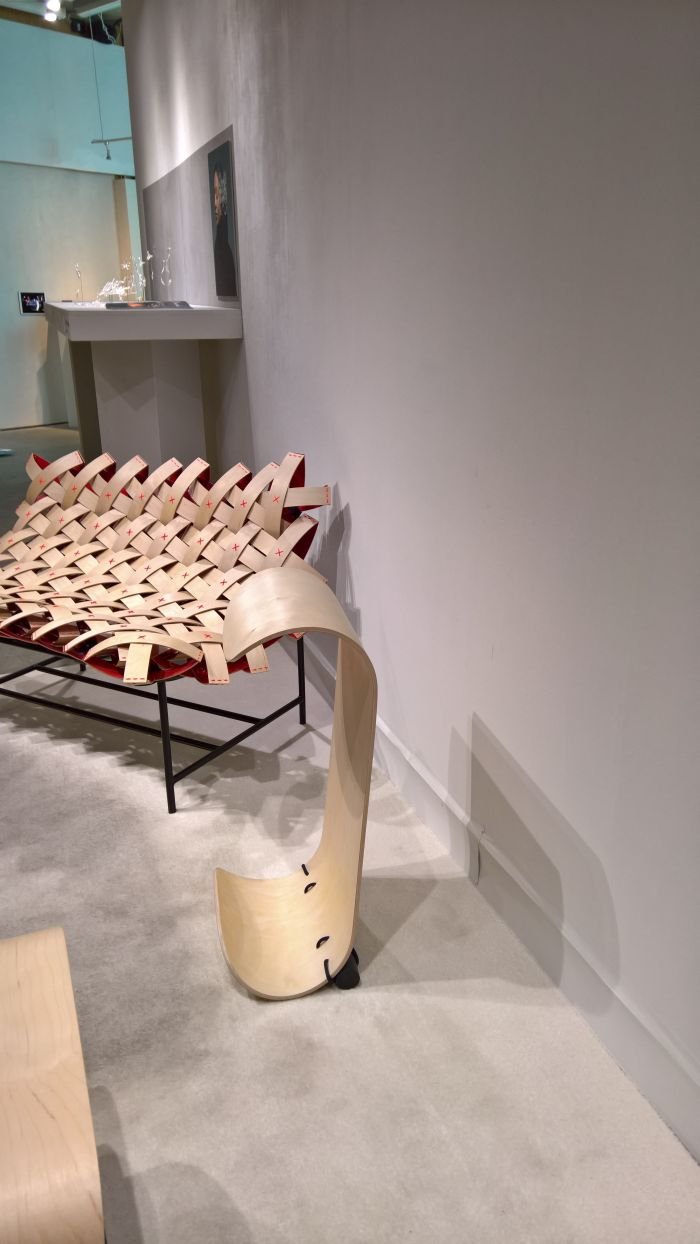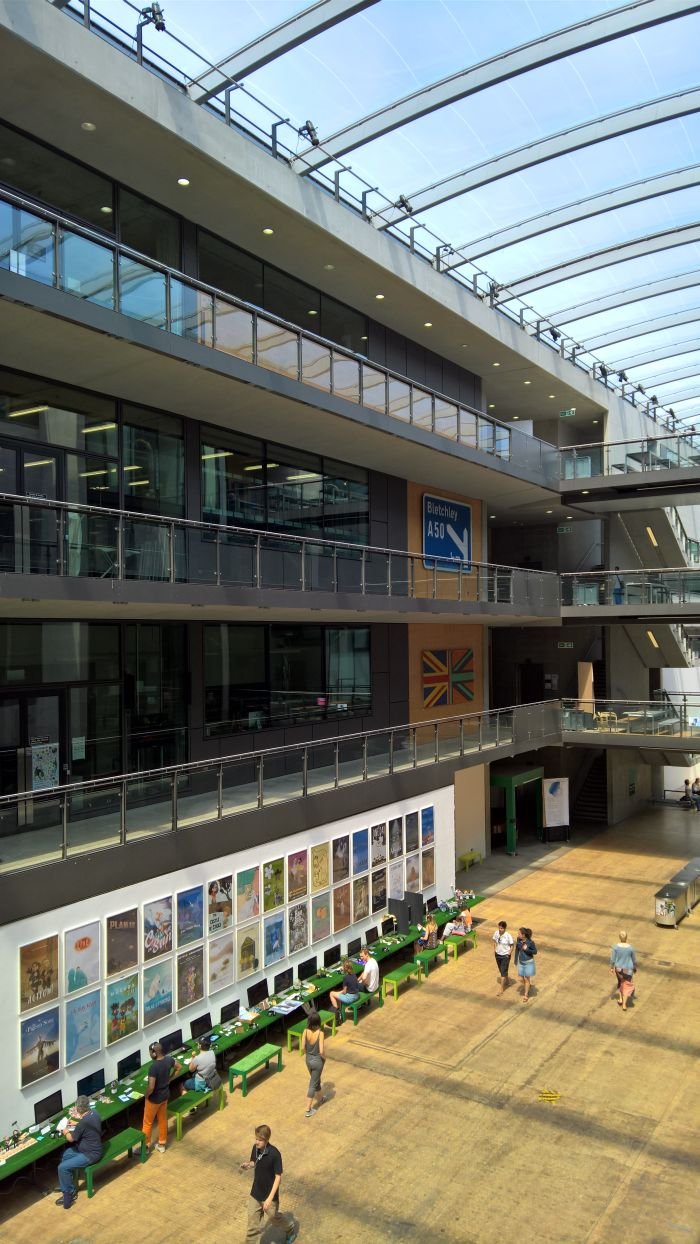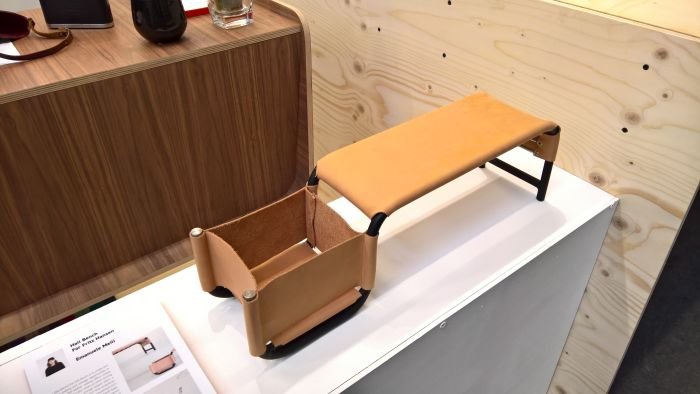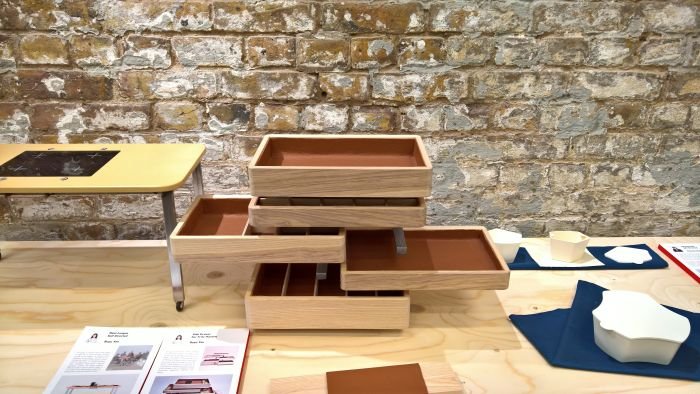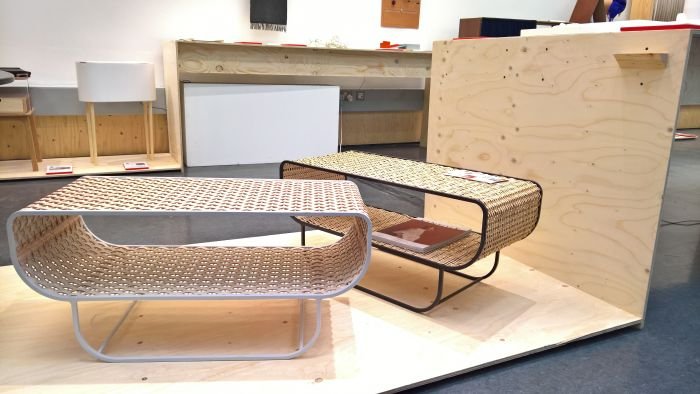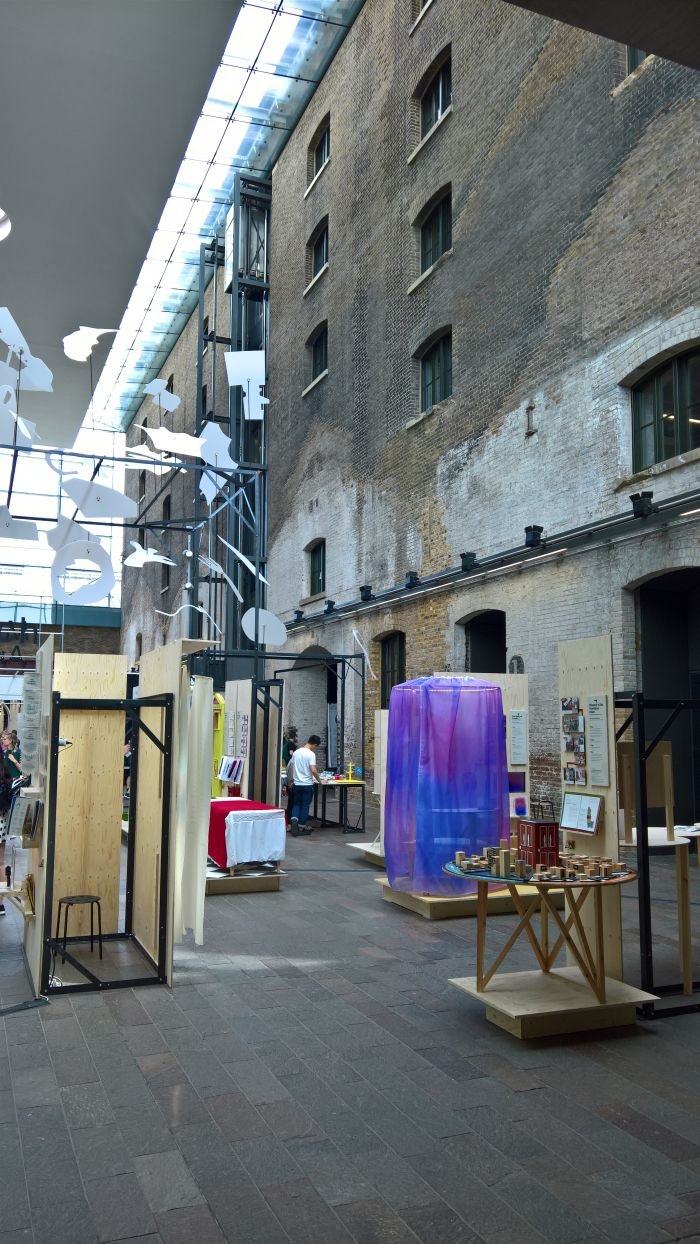The building which Central Saint Martins calls home was erected in 1852 as store for grain arriving from Lincolnshire and awaiting its further distribution to London's bakers.
Was, if you like, a transfer point, a hub, a location where general ideas became specific solutions, a place industry and trade called upon when needing raw materials for their latest project, a source for those whose work helped support and nourish the populace, a central institution in the development of the city and one, thereby, directly related to the immediate needs and interests of society.
We're sure there's a metaphor in there somewhere, somewhere, but where.......? Would a visit to the 2018 Central Saint Martins' Degree Show help us locate it.......?
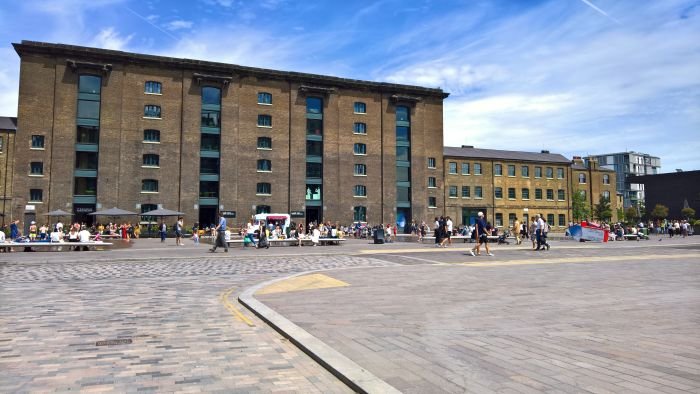
Tracing its history back to 1896 the contemporary Central Saint Martins, CSM, was established in 1989 and counts among its alumni since then the likes of, and amongst many, many others, Kossi Aguessy, Henrik Vibskov or Stella McCartney. That we visited Central Saint Martins on our 2017 #campustour we refer you to that post for the background, the focus here is the year past in Kings Cross.
Although as the title implies the focus of the 2018 Degree Show was very much graduation projects, the presentation did also include the results of several semester projects. Projects for which Central Saint Martins were able to attract some high calibre sponsors/partners including BUPA healthcare's Customer Lab who, and against the background that we are all living longer and will conceivably continue to do so ever more, challenged the students to "re-imagine healthy ageing"; MINI Living, an urban design project started initiated by the car manufacturer and who asked CSM students to consider future models of co-living and co-working; and a cooperation with Fritz Hansen which set the students the brief of reflecting on "what one might be keeping, storing and displaying", in a from technology defined future, and for all how Fritz Hansen could respond, through new products which "encode, embrace and express the essential" of Fritz Hansen's DNA.
For our part a lot of the product proposals got a little too caught up in ideas of luxury for the sake of luxury, in objects which celebrate themselves, something which we'd argue isn't in Fritz Hansen's DNA. Three projects did however appeal to us: Side Drawer by Ruyu Yan, a jewellery storage box based on a sideways sliding movement; W23 by Reinis Ducmanis, an object which Reinis claims doesn't disclose its function. ? or perhaps better put, ??? It's obviously an occasional table with storage space, and although we're admittedly unsure about the scale of the object and for all the relationship between base and top, we are very much enjoying the material and visual lightness; and Hall Bench by Emanuele Meili, a genuinely charmingly conceived leather and bent steel seating storage-object-cum-bench who, and rightly so, carries its glaring obviousness as a badge of honour. And where we note that amongst the many objects Emanuele states one can store in the basket he lists "dog leads". A man after our own hearts.
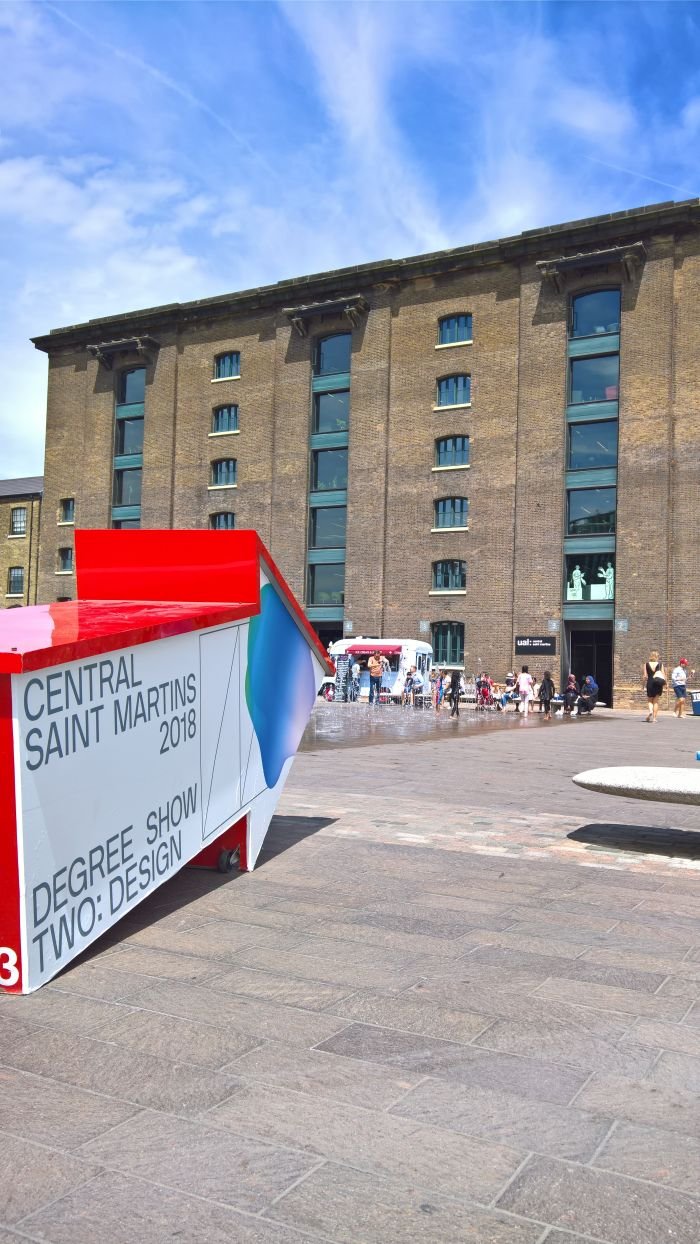
Among the graduation projects, the results of the Master in Narrative Environments provided for some interesting investigations into the use of that most contemporary of design/architecture concepts "Storytelling" in social and public contexts, the MA in Industrial Design with its mix of the conceptual, the practical, the digital and the analogue neatly reflected that contemporary Industrial Design isn't as unequivocal as the name implies, and also the rapidly evolving definition of "Industrial", while the Material Futures Master produced its usual mix of conceptual and practical projects at varying degrees of probability. Yet projects largely involving interesting propositions on relevant themes, including, and amongst many others Increasing the value of rice husk by Lulu Wang which explored possible uses for waste rice husk and thereby creating not only a new materials but tackling the air pollution caused by such burning; Made in our image: Love and cruelty with robots which considered the consequences of humanising robots; and This is grown/Bioweave by Jen Keane which explored "microbial weaving".
Elsewhere our attention was particularly caught by Mowo - Move with wood by Furniture Design Master graduate Lisa Stolz.
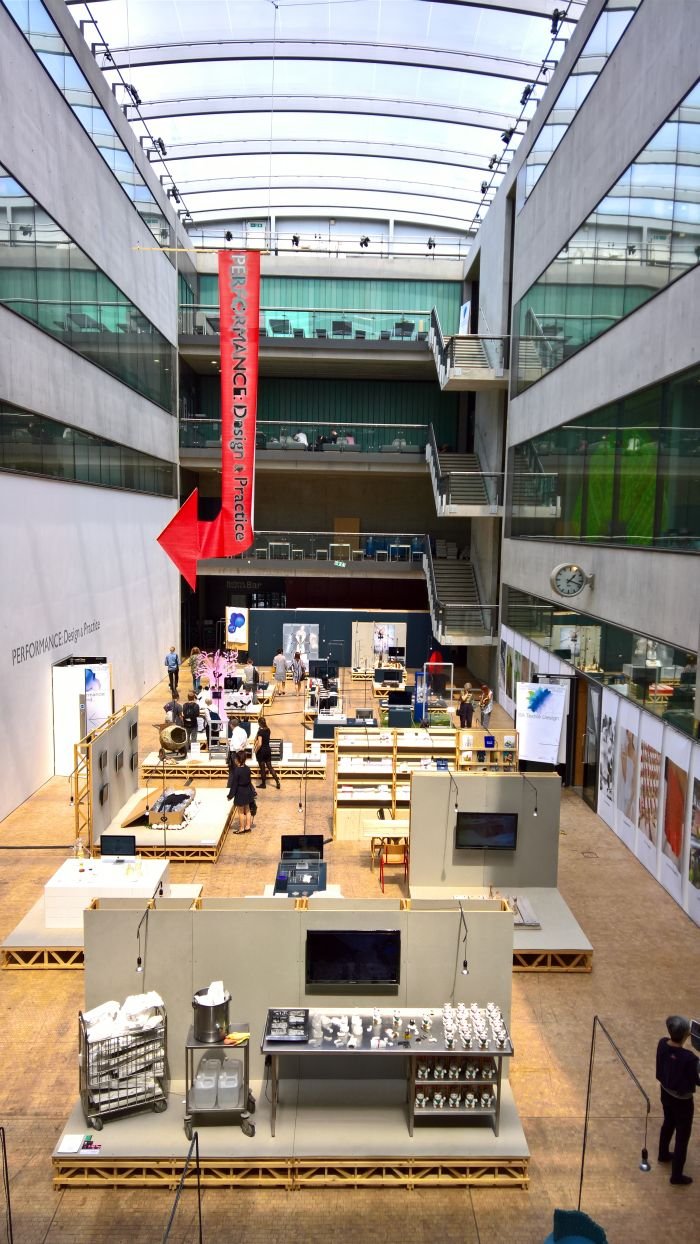
One of the genuine highlights for us of the exhibition Ron Arad: Yes to the Uncommon! at the Vitra Design Museum Schaudepot, was the work Bucking Bronco: essentially a length of sheet steel formed into a hoop on which you could sit and bounce. As we noted, the functionality arises from harnessing, sorry, the inherent properties of the materials and is based on principles similar to those employed in the numerous moulded plywood chairs by Aalto, Breuer, Summers et al in the shelving around it.
The same can be said of Mowo a project which uses the inherent properties of birch plywood to create a family of seating objects; albeit without taking the trouble and complication of actually forming them into seating objects.
It's almost, almost, a readymade.
As a project Mowo produced two distinct results, Aera, a woven plywood structure and the C collection. And from which our focus and interest is the C collection.
Curved at each end to give the impression of a badly damaged skateboard, or arguably Cs, Mowo offers the option for sitting and perching at various heights, and that on an object with a natural degree of flexibility, a flexibility one can control, manage, influence and thereby allowing for regular, natural, movement while seated; the two lower versions CC1 and CC2 allowing for either a rocking action or 360 degree gyration, in addition to the inherent buoyancy.
Very neatly scaled and proportioned objects, in addition to the pleasing seating functionality, C3, the higher, perching, version, would appear to be perfectly suited to efficient, unobtrusive storage, and thus for use as additional, occasional, seating in offices, institutions, public spaces, etc, etc, etc
If we did have one suggestion, and we know, we are in no position to make suggestions to designers, currently CC1 and CC2 are joined via a cord connection, which means the forms are fixed; however, if you had a connection system which enabled reconfiguration of the boards, that would, at least in our imaginations, extend the functionality of the system and make it even more interesting for the contract market than it currently surely must be. But as ever, what do we know
Full details on Central Saint Martins can be found at www.arts.ac.uk/csm
